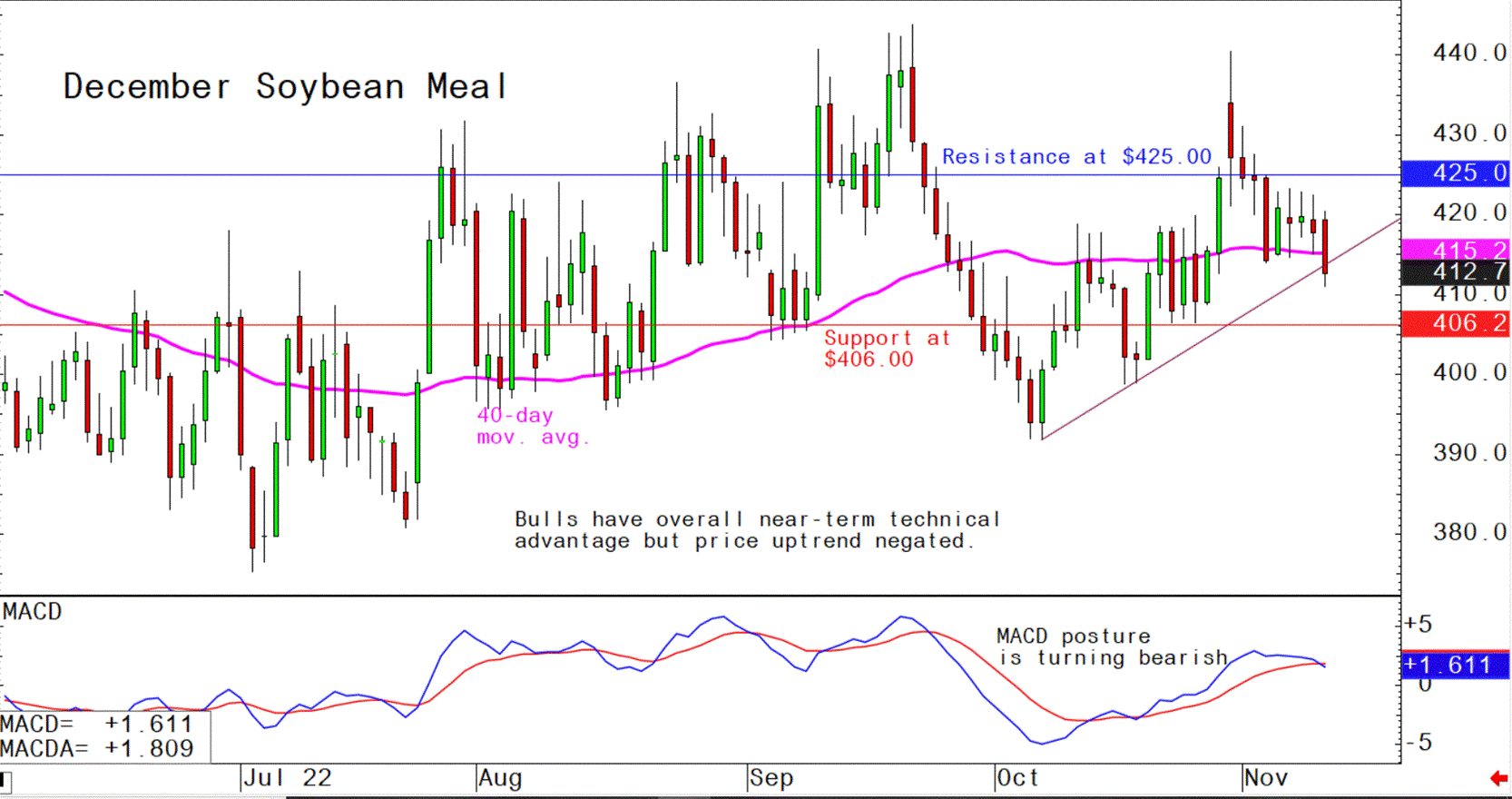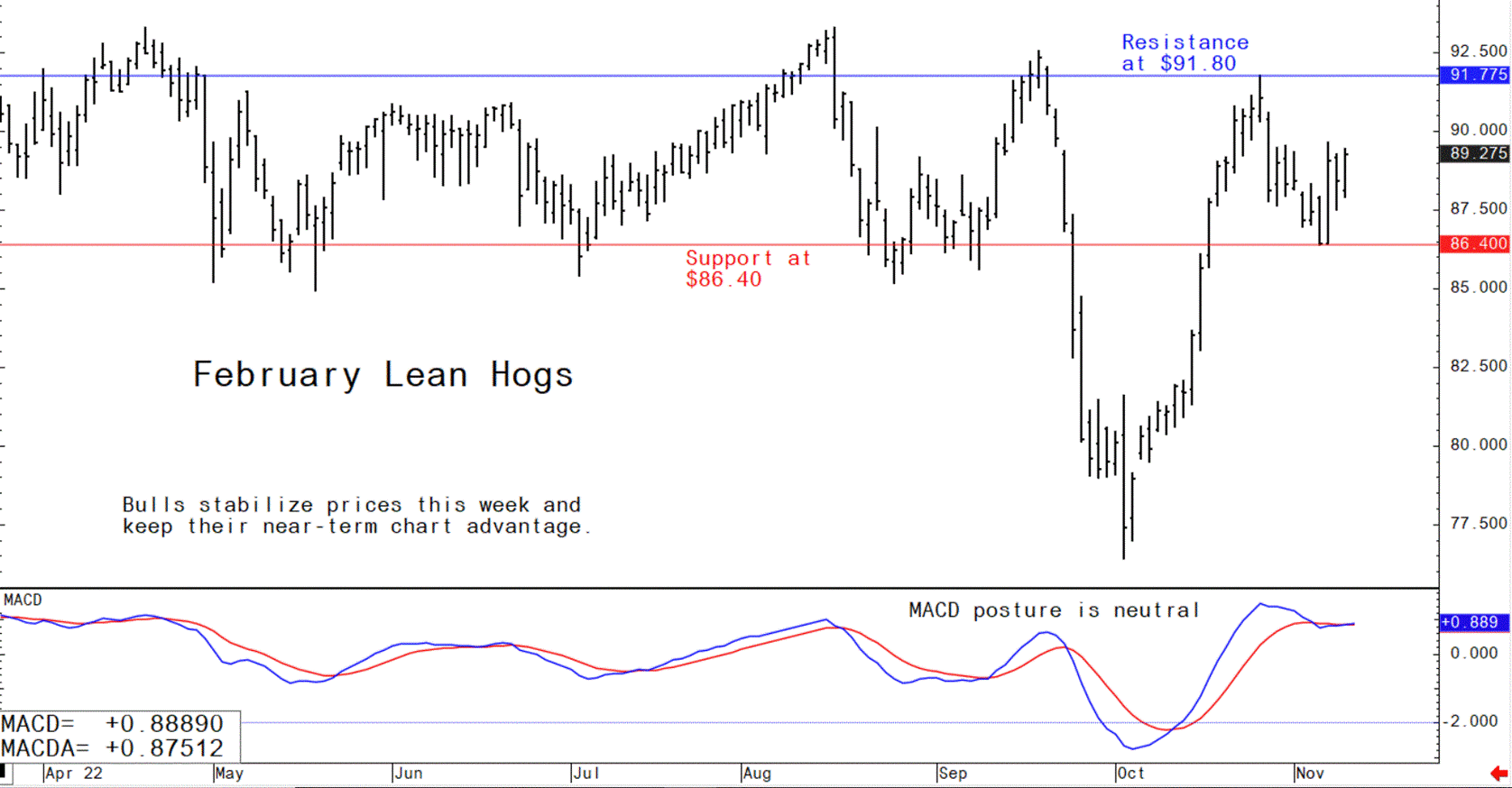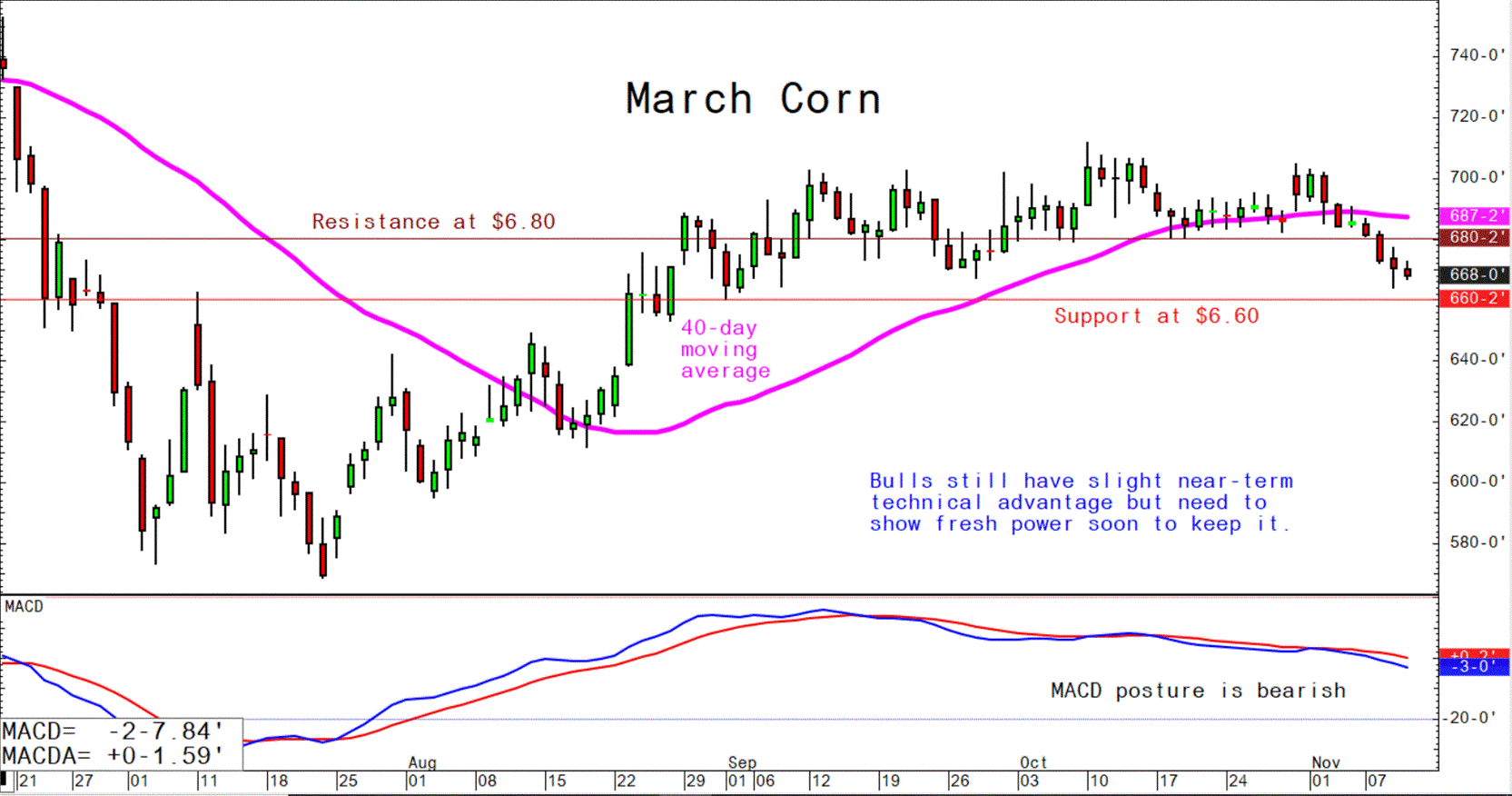Pig outlook: Lean hog futures bulls work to stabilize prices

Lean hog futures bulls this week have stabilized prices, and they are maintaining the overall near-term technical advantage. However, the CME lean hog index continues to decline. The latest index is down another 82 cents to $89.48 (as of Nov. 8), the first time it has been below $90.00 since Feb. 10. While the cash index continues to fall seasonally, the national direct cash price firmed 48 cents on Wednesday, the second straight daily rise. Last week’s estimated hog slaughter was 2.577 million head, the highest for the year, though down 1.3% from year-ago. Hog slaughter will continue to rise seasonally but is running right in line with levels suggested by USDA’s September Hogs & Pigs Report. As slaughter levels rise, the cash hog index likely will face more seasonal pressure.
Pork: US net sales of 10,800 MT for 2022 primarily for Mexico (9,100 MT, including decreases of 400 MT), South Korea (3,500 MT, including decreases of 500 MT), China (2,400 MT, including decreases of 100 MT), the Dominican Republic (900 MT, including decreases of 100 MT), and Colombia (600 MT, including decreases of 100 MT), were offset by reductions primarily for Australia (3,500 MT), Japan (2,300 MT), and Canada (900 MT). Net sales of 700 MT for 2023 were reported for South Korea (600 MT) and Australia (100 MT). Exports of 28,400 MT were primarily to Mexico (13,500 MT), China (3,900 MT), Japan (3,000 MT), South Korea (2,000 MT), and the Dominican Republic (1,500 MT).
China imported 630,000 MT of meat last month, down 20,000 MT (3.1%) from September and 30,000 MT (5.1%) less than last year. China doesn’t break down meat imports by class in its preliminary data, though the reduction was due to fewer pork imports. Through the first 10 months of the year, China imported 6.03 MMT of meat, down 25.0% from the same period last year.
The USDA forecast for 2022 red meat and poultry production is raised from last month as higher beef and broiler forecasts for the fourth quarter are partly offset by lower pork and turkey forecasts. Beef production is raised with higher expected cattle slaughter as well as higher carcass weights. Pork production is lowered on a slower expected pace of slaughter. Broiler production is raised on current slaughter and hatchery data. Turkey production is lowered based on tighter bird supplies. Egg production is lowered from last month on recent hatchery data. For 2023, the beef forecast is lowered on tighter supplies of fed cattle and lower cow slaughter. Broiler production is raised on expected growth in broiler flocks. Turkey production is lowered slightly for the first two quarters. Egg production is reduced as slower expected growth in production in late 2022 is carried into the first part of 2023.
Pork imports are lowered and exports are raised for 2022 on observed data. Weaker imports are carried through into 2023, but exports are unchanged. Broiler export forecasts for 2022 are raised on recent trade data while 2023 exports are unchanged. Turkey exports are raised for 2022 and 2023 on current trade data.
February lean hog futures–$86.40 to $93.30 and with a sideways bias
December soybean meal futures–$405.00 to $425.00, and with a sideways bias
December corn futures–$6.50 to $.6.80 and a sideways-lower bias


Read also
Official Release – December 17th! Crop & Price Navigator 2026/27
Global beef production to decline for first time in six years in 2026 – Rabo...
Port shelling sharply reduces wheat export prices in Ukraine
Indonesia’s palm oil stocks are falling by 10% per month
Ukraine exported 26 thsd tons of flour to the EU
Write to us
Our manager will contact you soon




